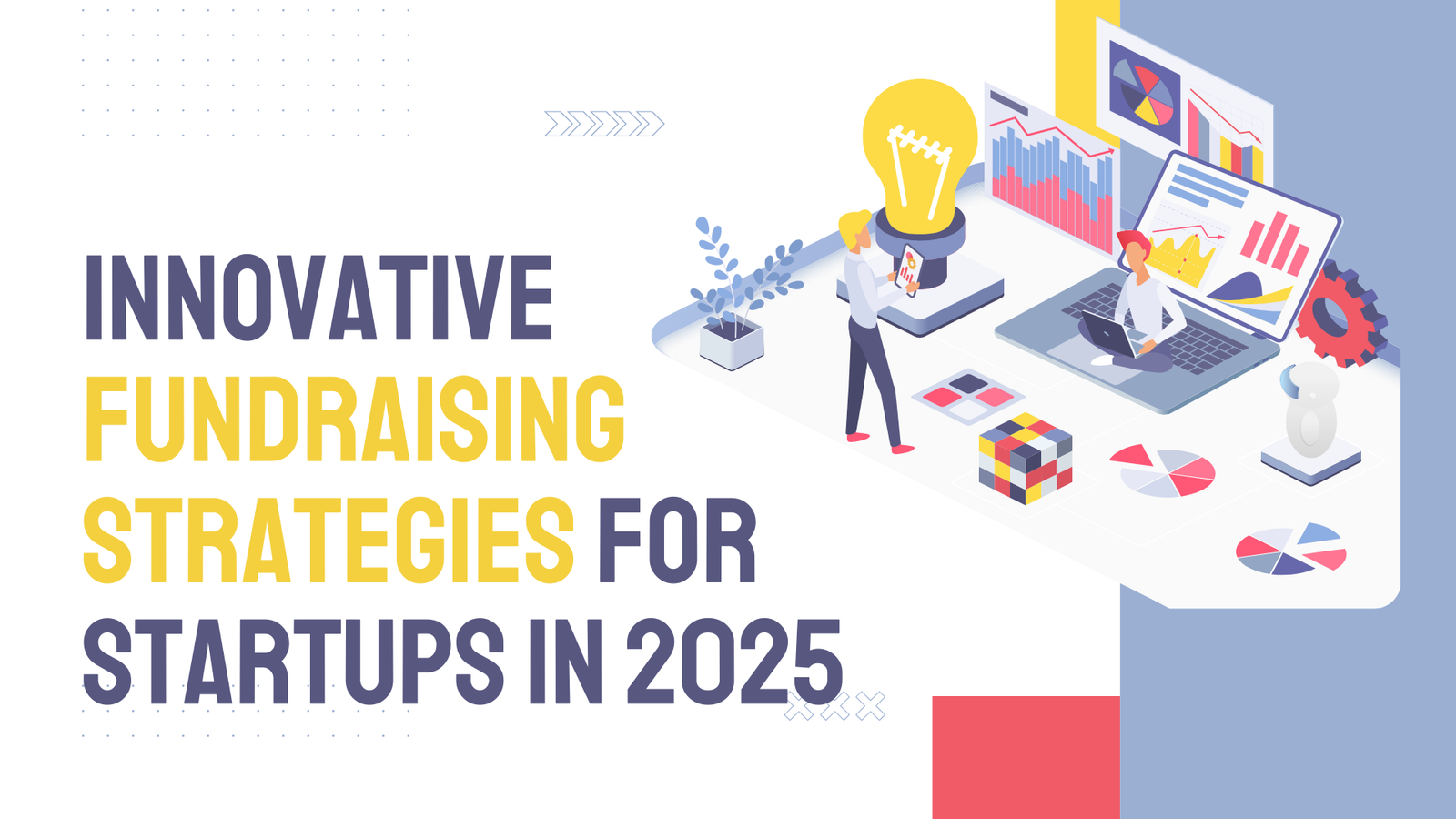Securing funding is a critical challenge for startups, and in 2025, the fundraising landscape is evolving rapidly. With traditional venture capital (VC) routes becoming more competitive, startups must embrace innovative and diverse strategies to attract investors and fuel growth.
Here’s a look at cutting-edge fundraising strategies to help startups thrive in 2025.
1. Crowdfunding 2.0: Community-Driven Capital
Why It Works:
Crowdfunding has evolved beyond Kickstarter and Indiegogo. In 2025, startups will leverage tokenized crowdfunding and equity-based platforms to raise funds while building strong customer communities.
How to Implement:
- Utilize platforms like Wefunder and Republic for equity crowdfunding.
- Engage with niche crowdfunding communities aligned with your industry.
- Offer tiered incentives to attract different investor levels.
2. Revenue-Based Financing (RBF)
Why It Works:
Unlike traditional equity investment, RBF allows startups to raise capital by sharing future revenues with investors instead of giving up ownership.
How to Implement:
- Partner with RBF platforms like Pipe or Clearco.
- Ensure a predictable revenue stream to attract investors.
- Structure repayments based on revenue percentage, offering flexibility.
3. Venture Studios and Startup Accelerators
Why It Works:
Instead of just funding, venture studios provide operational support, mentorship, and infrastructure to help startups scale rapidly.
How to Implement:
- Apply to startup studios like Atomic, Pioneer, or Science Inc.
- Focus on idea-stage validation to gain traction before seeking investment.
- Leverage the studio’s network for early-stage partnerships and funding.
4. Decentralized Finance (DeFi) and Blockchain-Based Funding
Why It Works:
Web3 technologies are disrupting traditional fundraising. Startups can tokenize assets, launch Initial Coin Offerings (ICOs), or use Decentralized Autonomous Organizations (DAOs) for funding.
How to Implement:
- Create utility tokens and list them on DeFi platforms.
- Explore fundraising through DAOs by engaging with decentralized communities.
- Ensure regulatory compliance for blockchain-based funding.
5. Corporate Venture Capital (CVC)
Why It Works:
Large corporations are actively investing in startups to fuel innovation. CVC funding comes with strategic benefits such as market access and distribution support.
How to Implement:
- Identify corporate investors aligned with your industry.
- Showcase how your startup complements their business model.
- Leverage corporate partnerships for credibility and expansion.
6. Syndicate Angel Investing and Rolling Funds
Why It Works:
Instead of relying on a single angel investor, startups can tap into syndicates or rolling funds that pool capital from multiple backers.
How to Implement:
- Join syndicate platforms like AngelList or MicroVentures.
- Approach rolling fund managers with a compelling pitch.
- Offer attractive investment terms to encourage participation.
7. Government Grants and Non-Dilutive Funding
Why It Works:
Governments and international organizations offer grants and incentives to innovative startups, especially in sectors like clean energy, AI, and biotech.
How to Implement:
- Research grant opportunities via local and global funding agencies.
- Develop strong proposals showcasing the societal impact of your startup.
- Combine grant funding with other investment sources for sustainable growth.
8. Alternative Lending and Fintech Solutions
Why It Works:
Fintech platforms are providing fast, non-traditional lending options, such as revenue-based loans and microfinancing, without requiring collateral.
How to Implement:
- Use fintech lenders like Kabbage, Brex, or OnDeck.
- Apply for micro-loans or working capital financing tailored for startups.
- Maintain strong financial records to increase loan approval chances.
9. Strategic Partnerships and Joint Ventures
Why It Works:
Instead of raising capital alone, partnering with established companies can provide funding, resources, and credibility.
How to Implement:
- Identify potential partners with complementary products or services.
- Structure deals where both parties benefit from shared success.
- Leverage partner networks for customer acquisition and brand visibility.
10. Social Impact and ESG-Driven Investments
Why It Works:
Investors are increasingly focusing on Environmental, Social, and Governance (ESG) factors. Startups with strong social impact missions attract dedicated funding sources.
How to Implement:
- Highlight ESG impact in your pitch and investor materials.
- Apply for social impact funds or sustainability grants.
- Align your business model with global sustainability goals (e.g., UN SDGs).
Final Thoughts…
Fundraising in 2025 requires startups to think beyond traditional VC models and explore diverse funding sources. By leveraging crowdfunding, DeFi, RBF, and strategic partnerships, startups can secure capital while maintaining flexibility and growth potential.
By combining multiple strategies, startups can navigate the competitive funding landscape and build a strong foundation for success in 2025. Need expert fundraising advice? Connect with our team today!


